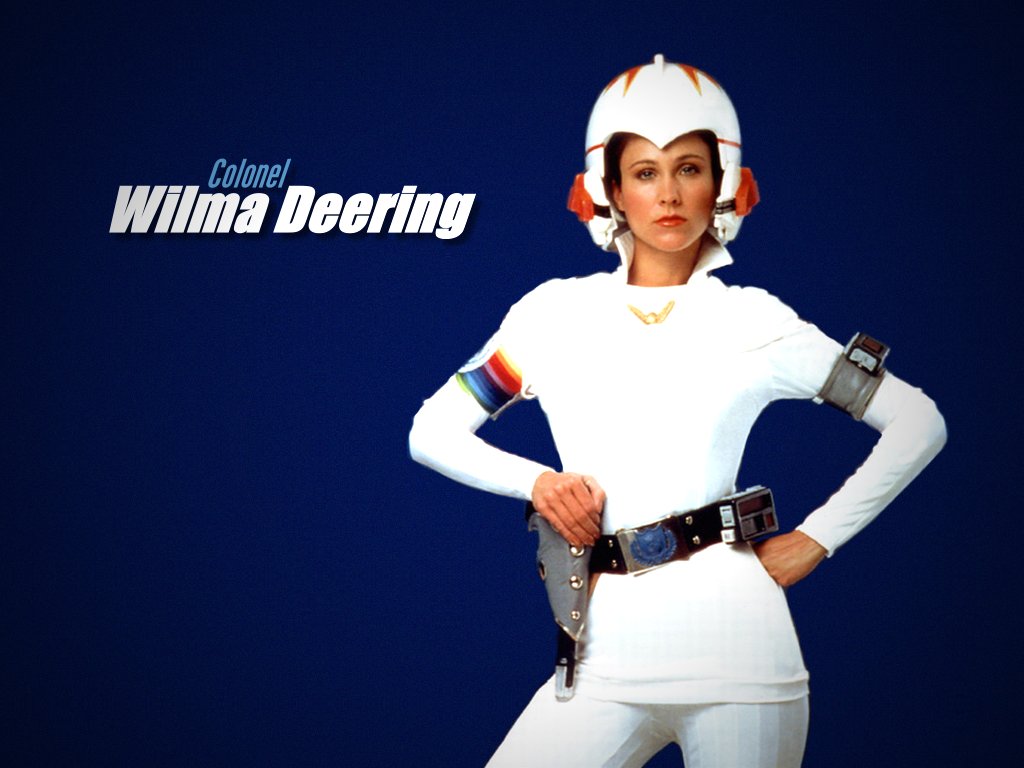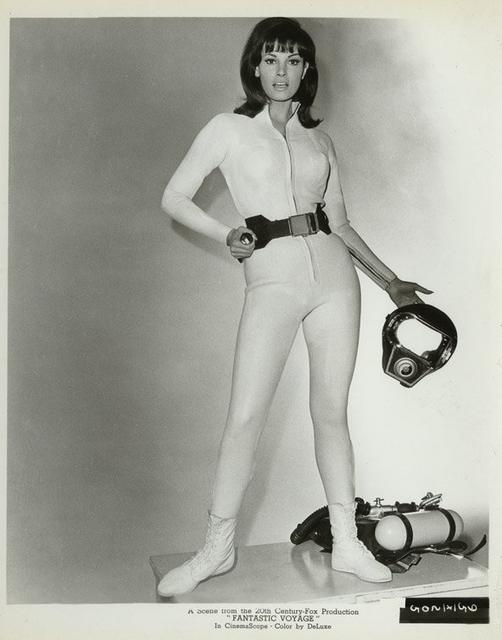Skip to comments.
Future Spacesuits Should Be Beautiful — and Not Just for Space. Here's Why
Space.com ^
| Nov 8, 2018
| Meghan Bartels, Space.com Senior Writer
Posted on 11/09/2018 9:43:03 AM PST by ETL
The stereotypical image of an astronaut is shaped by their spacesuit, with its puffy, white body and boxy backpack holding the life-support system.
Dava Newman, an aerospace engineer at the Massachusetts Institute of Technology, wants to change that. She is designing what she hopes will be the next generation of spacesuits — which will give the life-saving devices the bulk and style of something more like athletic or camping equipment.
"We're going to Mars not to sit in the habitat — we're going there to explore," Newman said. "We don't want you to fight the suit. We want you to find life on Mars."
[The Evolution of the Spacesuit in Pictures]
That design transition requires a change in the way the suits create pressure on the astronaut, which is done to keep an astronaut's blood liquid and moving throughout the body. (Without enough pressure, it could turn to gas.) For all of spaceflight to date, that pressure has come from filling the spacesuit with pure oxygen, putting the astronaut in a bubble of gas. Newman wants to create that pressure mechanically instead, with a suit that clings to skin.
We spoke with Newman about her research. This interview has been edited for length and clarity.
Space.com: Why did you want to tackle the spacesuit problem?
Dava Newman: My passion is trying to think about how to get people to Mars, so what could I do? What would my contribution be? I love the current [spacesuit] system. I've studied it. To me, it's really the world's smallest spacecraft. As an aerospace engineer, the design challenge is how do you take all the functions of a spacecraft, miniaturize them and put them right around the person? It's an incredibly hard engineering and design challenge. Our current systems that are gas-pressurized shells are fantastic, both from NASA [and from] Russia. But for the last 50 years, we've had people in gas-pressurized suits. They keep them [the astronauts] alive, and they do great work, but they're really coming to the end of their life cycle. So we need new systems, and we have a couple design choices. We can kind of do it the same way and be incremental — not my choice — or say, "How else can we do it?"
Space.com: What timeline are you looking for your next steps?
Newman: This year, [20]18, [20]19, we're having some more mock-ups made that will be in a few museum exhibit shows. ... Those are just mock-up suits that look and feel like it. We have big goals for [20]19, [20]20 to really do prototypes that attain our 30 kilopascal [goal], a third of an atmosphere pressure production, so that's where the research continues. We have to implement some active materials, we have to use some functional fabrics, really creating some of our own fabrics and smart fibers. You can carry information; optical fibers are amazing. [You can also provide] a little bit of thermal management — just comfort, heating up, cooling people down. … And I mentioned before the life-support systems, so that's where the research is going. We'd like to prototype these systems to get much higher-fidelity systems that are eventually ready for flight.
[How NASA Spacesuits Work: EMUs Explained (Infographic)]
Space.com: What sort of medical implications does your research have here on Earth? You've talked about students you work with at Harvard University who are studying to become aerospace biomedical engineers. What sort of projects have they worked on?
Newman: They love space. We call this "bioastronautics." We specialize in astronaut performance, suits, systems, exercise, countermeasures. … They've had really good medical training, so their interests are in Earth problems and how we can take our technologies, our experiments and perhaps run clinical experiments on rehabilitation, movement, control. The best theses have an aspect that's looking at a medical issue and an aspect looking at a space issue. [Newman described a project with Boston Children's Hospital trying to use spacesuit technology to help children born with cerebral palsy, a condition that affects motion and muscle control.]
They're not walking yet. Their brain is so plastic. Maybe if they go through certain motions and certain motor programs in our little suits — we did make suits for infants and take lots of measurements, because maybe we could help the range of motion — then, when the young person is about 2 years old and they start walking, maybe they would have extended range of motion and better muscle control and better muscle performance. … We're always thinking about how do we miniaturize things, how do we do wearable sensors. … Everything's so expensive to get in space. You don't get to fly a lot of instruments, so when you fly them, you really have to miniaturize them. And when you do, they just have great applications, usually, on Earth, for rural medicine, telemedicine, those kind of uses. That's exciting, because you feel like maybe we can make a difference on Earth.
Space.com: Aesthetics clearly play a role in your designs. Why is that important to you?
Newman:& It's always about teaming [up with others], because engineering, we solve some of the technical questions, the technologies, materials. But, yeah, I always work with designers and artists. It's a lot more fun. You want to wear beautiful things. You want to have a great suit and [one that] looks good. … It doesn't cost any extra money to do it right and do it very aesthetically, and I'm always learning as well from multidisciplinary teams, because bringing people together, they might have a different solution. I come at it usually from an analytical or technical [perspective], and you bring artists together, you bring designers, and they're going to really push us on form, functionality, things like this. So, we just make good teams — and have fun."
TOPICS: Astronomy; Chit/Chat; Science
KEYWORDS: elonmusk; falcon9; falconheavy; spacex
Navigation: use the links below to view more comments.
first 1-20, 21-40, 41-45 next last

NASA and independent researchers are working to design new and improved spacesuits for the next gen-
eration of off-Earth travelers. Credit: NASA

Dava Newman dons the Biosuit spacesuit design on Henry Moore's
sculpture "Reclining Figure" on the MIT campus.
Credit: Donna Coveney/MIT.
/cdn.vox-cdn.com/uploads/chorus_asset/file/11541649/DavaNewman2.jpeg)
1
posted on
11/09/2018 9:43:03 AM PST
by
ETL
To: ETL
This is why everyone from the future wears a silver unitard.
2
posted on
11/09/2018 9:43:58 AM PST
by
Mr. K
(No consequence of repealing Obamacare is worse than Obamacare itself.)
To: ETL
3
posted on
11/09/2018 9:44:51 AM PST
by
DannyTN
To: ETL
4
posted on
11/09/2018 9:45:23 AM PST
by
dfwgator
(Endut! Hoch Hech!)
To: ETL
5
posted on
11/09/2018 9:45:29 AM PST
by
DannyTN
To: ETL
6
posted on
11/09/2018 9:45:29 AM PST
by
DannyTN
To: ETL
Oh yes, fashion over function by all means. So, is anyone concerned that in the top pic it appears that two of the entities are holding some sort of weapon and the one on the right appears to have his/her/their fists up. Is this the US Space Force promo? LOL!
7
posted on
11/09/2018 9:46:04 AM PST
by
rktman
(Enlisted in the Navy in '67 to protect folks rights to strip my rights. WTH?)
To: ETL
Dava Newman, an aerospace engineer at the Massachusetts Institute of Technology, wants to change that. She is designing what she hopes will be the next generation of spacesuits — which will give the life-saving devices the bulk and style of something more like athletic or camping equipment.A woman more concerned about fashion than functionality.
I once said to a woman at work women are more concerned about how a bathroom looks than how it functions.
She thought for a second and said, 'yeah'.
To: ETL
Extreme care must be taken not to offend space aliens.
9
posted on
11/09/2018 9:50:21 AM PST
by
mountainlion
(Live well for those that did not make it back.)
To: ETL
10
posted on
11/09/2018 9:54:08 AM PST
by
bankwalker
(Immigration without assimilation is an invasion.)
To: DannyTN
Stormy Daniels was looking hot when she was younger!
To: ETL
Until they find something better than thick lead, space suits will be large and unwieldy.
Radiation will be a problem no matter what.
12
posted on
11/09/2018 9:56:56 AM PST
by
RandallFlagg
(Fact: Gun control laws kill innocents.)
To: ETL
I prefer practical, functional design for something like a spacesuit. My life depends on how well it works in a hostile environment.
13
posted on
11/09/2018 9:58:54 AM PST
by
Army Air Corps
(Four Fried Chickens and a Coke)
To: ETL
I want to look my best, in case I cross paths with that green skinned alien babe.
14
posted on
11/09/2018 10:06:12 AM PST
by
Huskrrrr
To: ETL
15
posted on
11/09/2018 10:10:40 AM PST
by
raybbr
(That progressive bumper sticker on your car might just as wll say, "Yes, I'm THAT stupid!"to)
To: DannyTN; All
Excellent Friday thread -
More sci-fi babe pictures, please!
16
posted on
11/09/2018 10:13:29 AM PST
by
MarchonDC09122009
(When is our next march on DC? When have we had enough?)
To: ETL
Newman wants to create that pressure mechanically instead, with a suit that clings to skin. I would be interested in seeing how they maintain pressure in areas with a convex curve like armpits, elbow and finger joints, groin, etc. When I say my crotch is boiling I don't want it to be literal.
17
posted on
11/09/2018 10:16:11 AM PST
by
KarlInOhio
(Leave the job, leave the clearance. It should be the same rule for the Swamp as for everyone else.)
To: ETL
18
posted on
11/09/2018 10:18:58 AM PST
by
csvset
(illegitimi non carborundum)
To: ETL
Heinlein made a point of this in many of his short stories and novels, particularly those concerning “belters”. Their suits were their LIFE, so they paid particular attention to maintenance and took considerable pride in them, including decorations.
19
posted on
11/09/2018 10:27:04 AM PST
by
SJSAMPLE
To: ETL
Women focus on fashion and we are told not to stereotype them.
20
posted on
11/09/2018 10:35:28 AM PST
by
a fool in paradise
(Denounce DUAC - The Democrats Un-American Activists Committee)
Navigation: use the links below to view more comments.
first 1-20, 21-40, 41-45 next last
Disclaimer:
Opinions posted on Free Republic are those of the individual
posters and do not necessarily represent the opinion of Free Republic or its
management. All materials posted herein are protected by copyright law and the
exemption for fair use of copyrighted works.
FreeRepublic.com is powered by software copyright 2000-2008 John Robinson


/cdn.vox-cdn.com/uploads/chorus_asset/file/11541649/DavaNewman2.jpeg)




